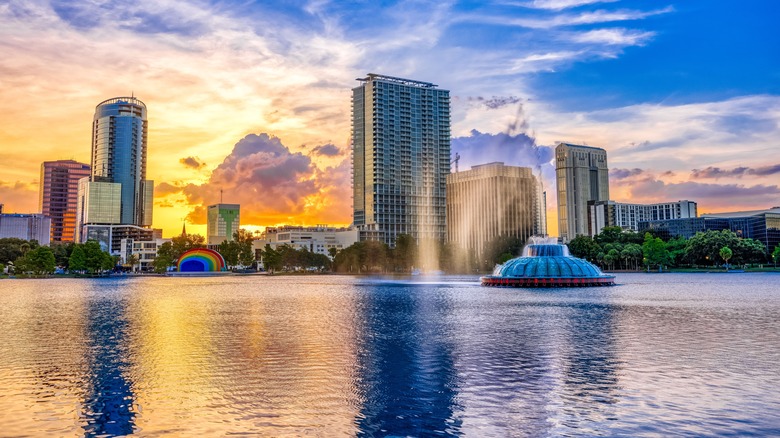This Popular Florida City Is The Least-Walkable Tourist Destination In America
There are few things that top the leisure of strolling down the block to grab your favorite morning cup of coffee or walking to the grocery store without ever having to reach for your car keys. Unfortunately, that's just not the reality for people living in many of the metropolitan cities across the United States. In contrast to the condensed, cobblestone streets that characterize much of Europe's walkable cities, walkability is a luxury for Americans. According to a Preply study, Orlando, Florida has recently been named the least-walkable city in America. While it may not be one of the first factors considered when planning a trip to a new destination, the results of this 2024 study may cause you to rethink. Preply analyzed the walkability of the 30 most-visited cities in America, using the distance, walking time, and step count between each city's main attractions to determine the most and least walkable cities. Tripadvisor and Google Maps were two tools analyzed to determine the statistics of this survey.
The astonishing results were enough to put Orlando in first place for least walkable, followed by Los Angeles and San Francisco in second and third. While that's not to say that the entire city of Orlando is unwalkable, it certainly isn't the city where tourists will want to skip out on renting a car. Some neighborhoods are within walking distance to nearby hot spots, but the city as a whole is far from what most people would consider pedestrian-friendly.
What makes Orlando an unwalkable city?
After curating a list of Orlando's top five most-reviewed tourist attractions on Trip Advisor, Preply conducted an in-depth research study on the total distance it would take tourists to walk between each iconic landmark. The top five attractions were found to be Universal Islands of Adventure, Discovery Cove, Universal Studios, Magic Kingdom Park, and The Wizarding World of Harry Potter. However, analysts found that it would require a 31-mile trek and 65,000 steps using the most efficient route to reach all of the top five attractions in a single day — which is virtually impossible. Statistics from walkscore.com also gave Orlando a low score of 42, in contrast to cities like Boston and New York which received scores in the 80s. Part of what makes Orlando so difficult to cover on foot is its broad, widely distributed cityscape, in comparison to some other American cities.
It's not just the distance that makes Orlando so unfriendly to wayfarers. The city is also known for its high crime rate, which can make walking long distances a concern for safety, especially at night. The city's lack of road safety also contributes to a high number of deaths and injuries for walkers. According to Orlando Sentinel, Orlando ranks among the deadliest cities for pedestrian deaths, but residents are hopeful in their ability to turn these statistics around.
Tips for making this unwalkable city more walkable
A 2024 news report revealed that city officials are attempting to invest in greater efforts to improve the walkability of Orlando by focusing on street improvements on particularly dangerous roads, like pedestrian ramps, crosswalks, and speed reductions. In the meantime, visitors should plan to base their stay in one of Orlando's more walkable districts. South Eola, Lake Eola Park, Winter Park, and the Central Business District have been named as some of the most walkable areas in Orlando, making them the best places to stay on your Florida vacation. These pedestrian-friendly districts are located within close proximity to farmer's markets, subway and train stations, museums, and cafes. While motor transportation will still likely be necessary, visitors have the benefit of a home base that offers greater access to nearby amenities.
When it comes to venturing outside your chosen neighborhood, it's better to rent a car, rather than rely on taxis and Uber. Not only is this a safer and more convenient option, it also helps maximize your budget, given that some taxis charge up to $2 per mile, and ride share surge pricing can be through the roof, which quickly adds up. If you find a good deal, renting a car can be cheaper. While the city's main tourist attractions may be spread further apart, Orlando is still a fascinating city that's well worth a visit.


